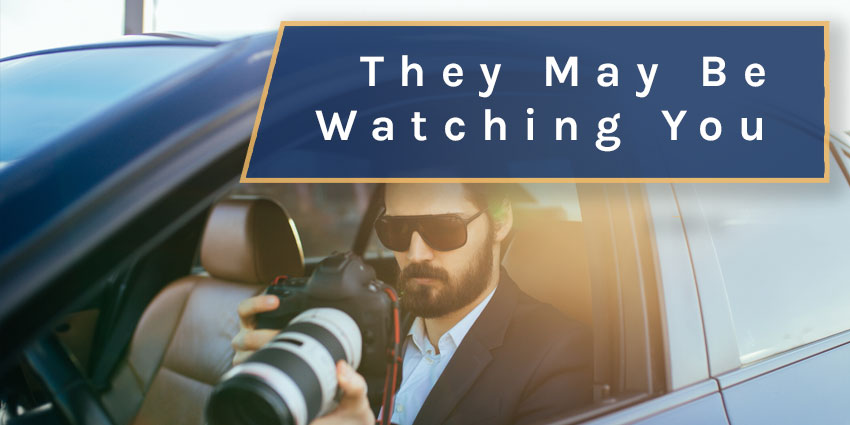I had a recent car accident case that resulted in a trial. The insurance company for the defendant took four years of surveillance after the car accident on my client. The surveillance began 23 days after the car accident and ended shortly before the trial. The way the lawyer for the insurance company used the surveillance distorted the case. Please read this story for a first-hand account of the lengths that these companies will take. If you have been injured in a car accident, this same scenario might be happening to you without your knowledge. I hope that this example will help prepare you.
Table of Contents
Facts of the Car Accident Case:
My client was severely injured in a rear-end car accident four years ago. She was taken by ambulance to the hospital. It was a major impact and resulted in a four-car collision. There was no doubt that the insurance company was concerned that there could be massive exposure for this case. My client had neck and back injuries as well as a serious traumatic brain injury (TBI).
The Surveillance:
All of the surveillance was done over a period of four years after the car accident. We asked for the videos repeatedly, but the insurance lawyers did not turn them over. They claimed that they hadn’t decided whether they were going to use it (big lie). None of it was turned over to us until a few months before trial when the court imposed mandatory deadlines. Therefore, while we knew that surveillance had been done, we had no idea when, where, or how much.
What the Surveillance Companies Did:
Over the four years, several companies were hired to watch my client after the car accident. There was no sound in any of the videos. They started following her every time she left her home. Most of the video was filmed from a stationary car. They followed her out to breakfast in Gulfport and walked to and from her car. They also started following her as she drove to and from her doctor’s appointments and shopping. When she went into a store, such as Walmart, they put the camera in a cart and followed her around while she shopped. The cart with the camera was so close to her at times that it was shocking. She was two feet away from the camera and had no idea it was there. It showed her bending over to pick up items.
At one point while the car accident case was pending, our client was required to be seen by a doctor hired by the defense. It is standard in every case and called a Compulsory Medical Exam (CME). When my client showed up for the exam, the surveillance company was there waiting for her. They filmed her getting in and out of the car and chatting with her friend during breaks.
She lived in a gated community, so the surveillance company should not have gone in. It was trespassing for them to be in there. They did it anyway. For days and months on end, they waited outside her door in a car with a video camera aimed at her. They filmed her every time she walked her dog and bent over to pick up after the dog. They filmed her talking to her neighbors while she walked the dog. The amount of days that they must have been at her house in order to film her that many times must have been countless. We will never know how many days they were actually there because she did not leave the house much and they did not turn over records of how much time they actually spent.
The Trial:
They turned over four sets of videos to us. Each set represented a year. The videos had been edited and were pieced together. In other words, a video would skip from her leaving her house to her walking into her doctor’s office to her then leaving the office. What they cut out, we will never know.
At trial over the car accident, they entered all of the videos into evidence. The total length of the videos if played consecutively would have been a few hours. So, they did not play the full videos in the interest of time. Instead, the insurance lawyers further cut down the videos into a “hit piece” video. The video only showed my client bending over, talking to neighbors, and the like. All of the shots of her holding her back, stretching, or in obvious pain were cut out! It was ridiculous and unfair. Fortunately, I was able to put my client on the stand and play the portions where she was clearly showing that she had back pain.
In my opinion, the jury watched the surveillance videos intently. They took more notes about the videos than any other witness in the trial. So, it highlighted to me that surveillance is extremely important.
How They Used the Surveillance After the Car Accident in Closing Argument:
In the closing argument, they made a big deal about the videos. The closing argument was an hour and at least 20 minutes of that time was spent going through everything that she was able to do in the video. They argued that the jury should not listen to the witnesses that we called that described her limitations and pain. Instead, they said that all the jury had to do was to watch the videos. It was actually a pretty and persuasive argument.
They really hit hard about the videos contradicting the injuries. They argued that she did not have a brain injury because she was able to speak to people. Remember, there was no sound! But, they made the argument anyway. They also argued that she was able to drive a car and thus, could not have a brain injury. They also argued that since she was able to shop, bend over, and carry groceries, she did not have a back injury.
Result:
While we still managed a very successful verdict, we feel that we could have done even better had the video footage not been submitted as evidence. I believe that the surveillance videos gave the jury just enough doubt to not award more.
Conclusion: (Surveillance After the Car Accident Can Hurt Your Case)
Every person who has been injured in a car accident can be surveilled and followed by the insurance companies. It is admissible in court and perfectly legal. It is also hard to challenge. If there is a big accident involving hospitalization, assume that there is going to be surveillance after a car accident. While I had never seen so much surveillance performed over four years like in this case, this cannot be the only time it has happened. While you cannot live your life in fear, always assume that someone will be watching. If you see a strange car parked on your street in front of your house, send someone out to investigate. You can’t make them move, but just don’t give them anything to use against you.
If you have any questions about your car accident injury claim, I invite you to contact me for a free consultation or call me at (727) 381-2300.














